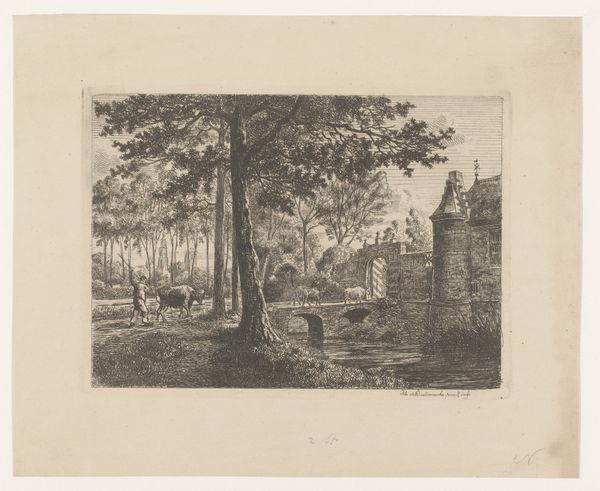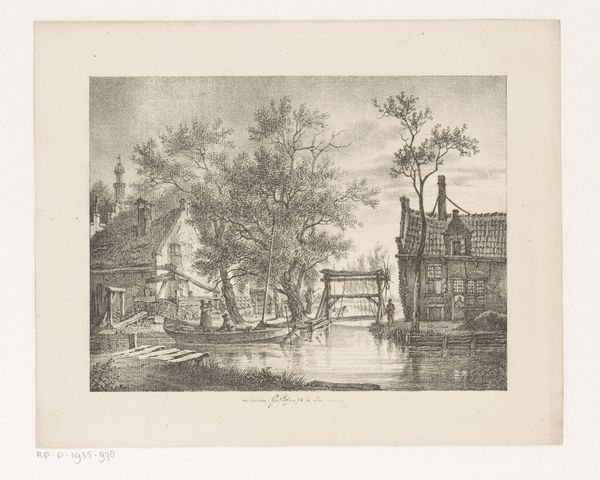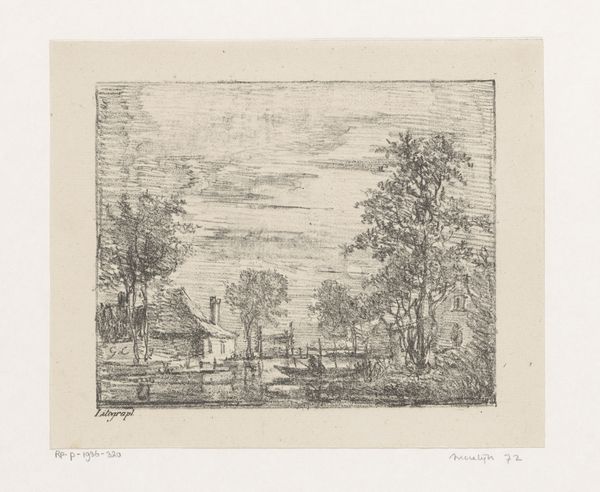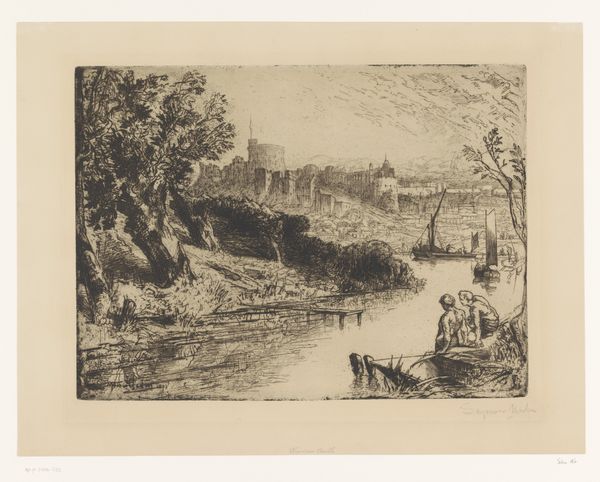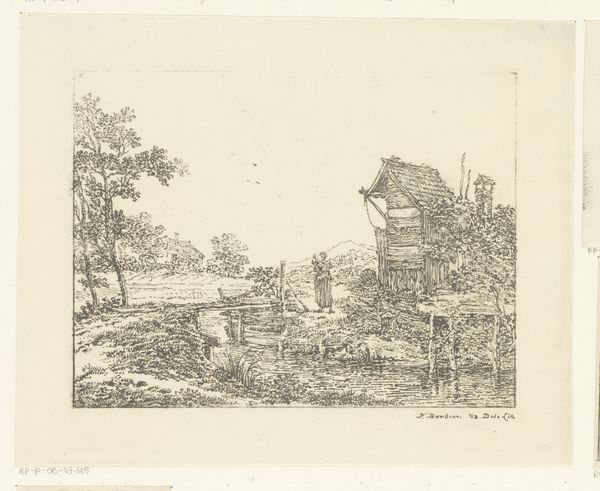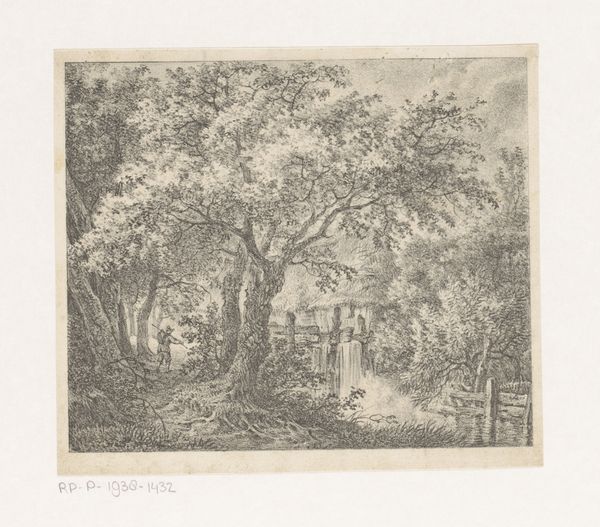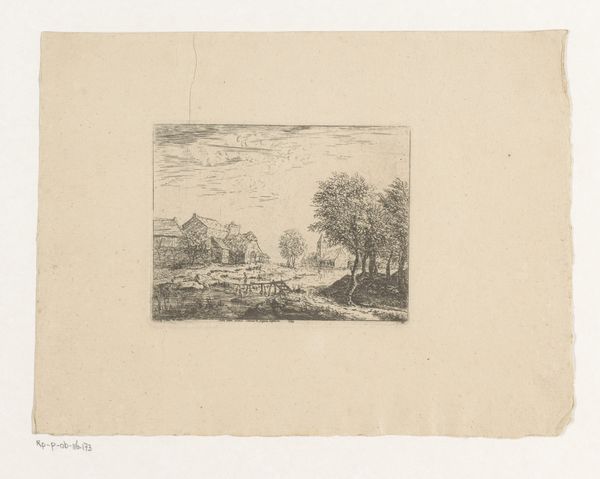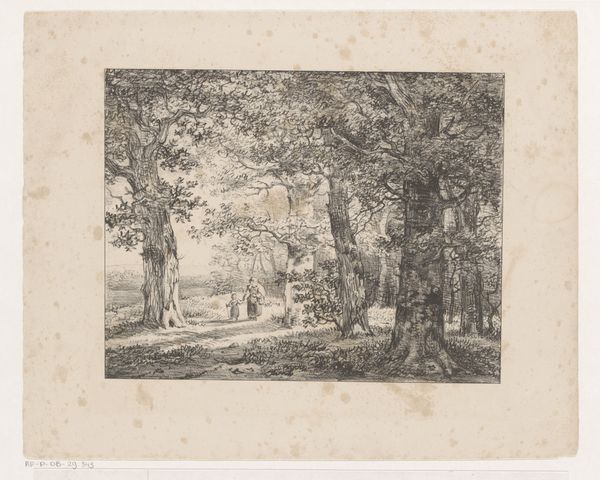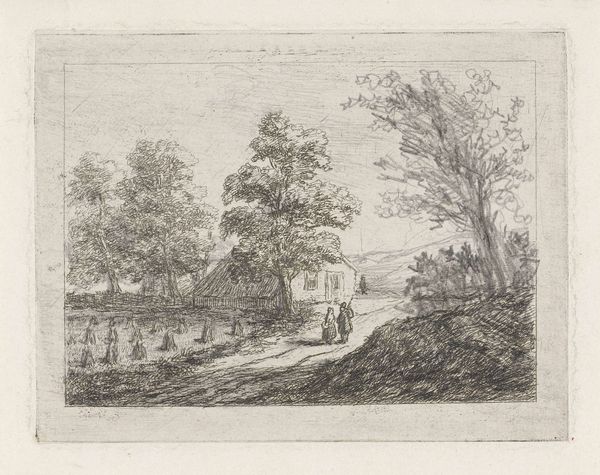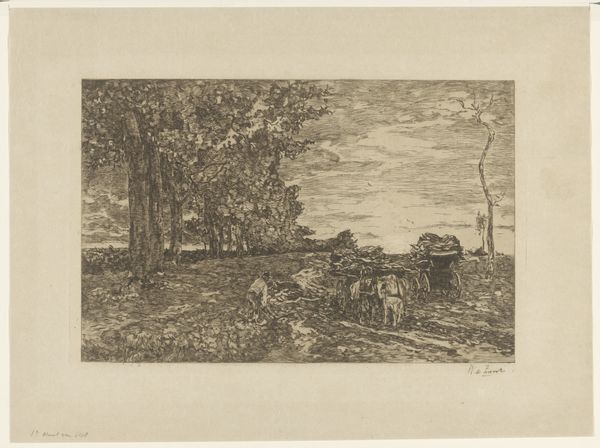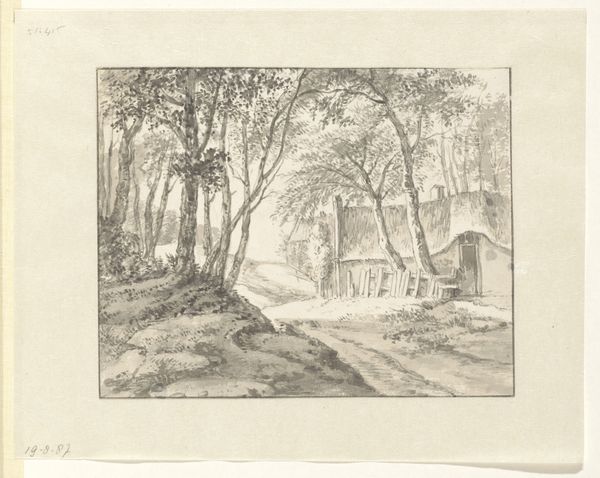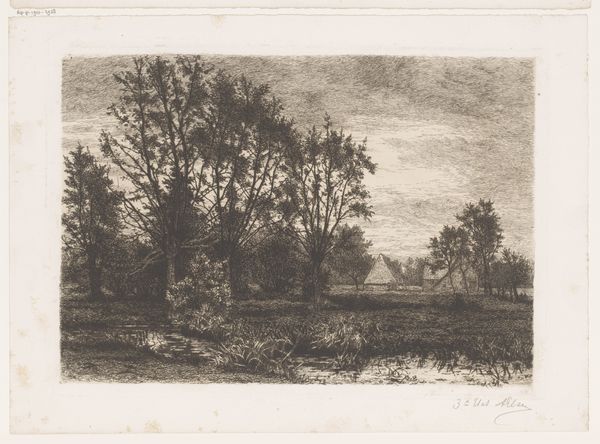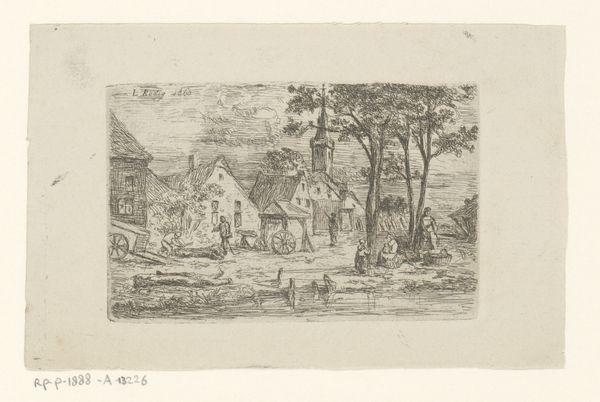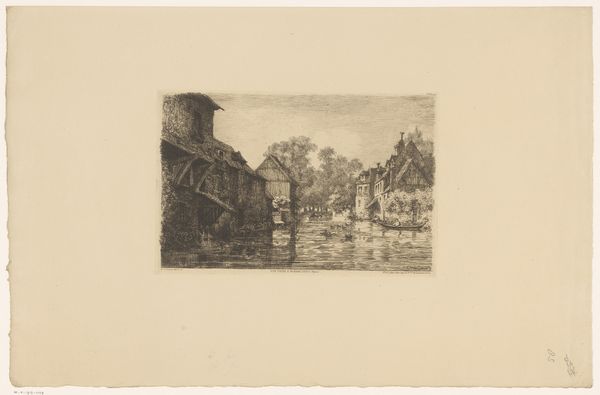
Dimensions: height 152 mm, width 208 mm
Copyright: Rijks Museum: Open Domain
Curator: Welcome. We are standing before "View of Sterckshof Castle in Deurne near Antwerp" created between 1846 and 1878 by Félix de Baerdemaecker. It’s a detailed etching. Editor: It strikes me as quiet, almost melancholic. The landscape is beautifully rendered, but there’s a sense of…isolation? Even the castle feels a bit forlorn, despite its architectural grandeur. Curator: Indeed. Consider the symbolism of the castle itself. It’s not merely a structure; it’s a vessel carrying centuries of power, legacy, and perhaps even hidden stories. The image may reflect upon feudal social and spiritual frameworks that are rapidly vanishing with the arrival of modern forms of industrial production and society. Editor: From a material perspective, think about etching at this time. Baerdemaecker has complete control over this reproducible image and can disseminate this image of old power very widely. Look at the meticulous linework. Etching is laborious; a copper plate slowly eaten away by acid to yield this atmospheric scene. The man and his oxen further contrast with the scale of the manor home. The material constraints dictated a certain type of aesthetic labor to become visible in this piece. Curator: Precisely! That visual precision lends itself well to both the Realist and Romanticist styles, allowing him to explore not just the observable details of the scene, but the emotional weight of the subject itself. That tree looming to the foreground, for example. Its placement almost asks the viewer to compare our present stature with its enduring, silent dominance in the composition. Editor: And notice how the textures, created by layering line by line, almost simulate brushwork to replicate paint; a very painterly use of printmaking, indeed! It hints at both artistic skill and a longing for maybe a bygone mode of image production? A bridge, literally a material bridge connects this tower to an area outside the compound. This division, mediated through the bridge, mirrors social separations across multiple strata of society, which an object, like an Ox, might be crossing, moving labor around different locations in the physical landscape. Curator: Perhaps the oxen being led across the bridge by the peasant, is more than a simple moment in genre-painting. It’s an emblem of labor, or the transfer of value in that economic mode, forever trapped between castle and common ground. This echoes anxieties around who could now control these representations of social power, after their rapid proliferation via printmaking practices, made their way out of courtier holdings, and into democratic culture. Editor: It shows us how processes of labor and materiality are connected. By showing these material features within this genre, new relations come into view regarding the castle and people on the property and around. Curator: A great tension in an apparently quiet scene. A great place for reflection. Editor: Definitely; food for material thought.
Comments
No comments
Be the first to comment and join the conversation on the ultimate creative platform.
